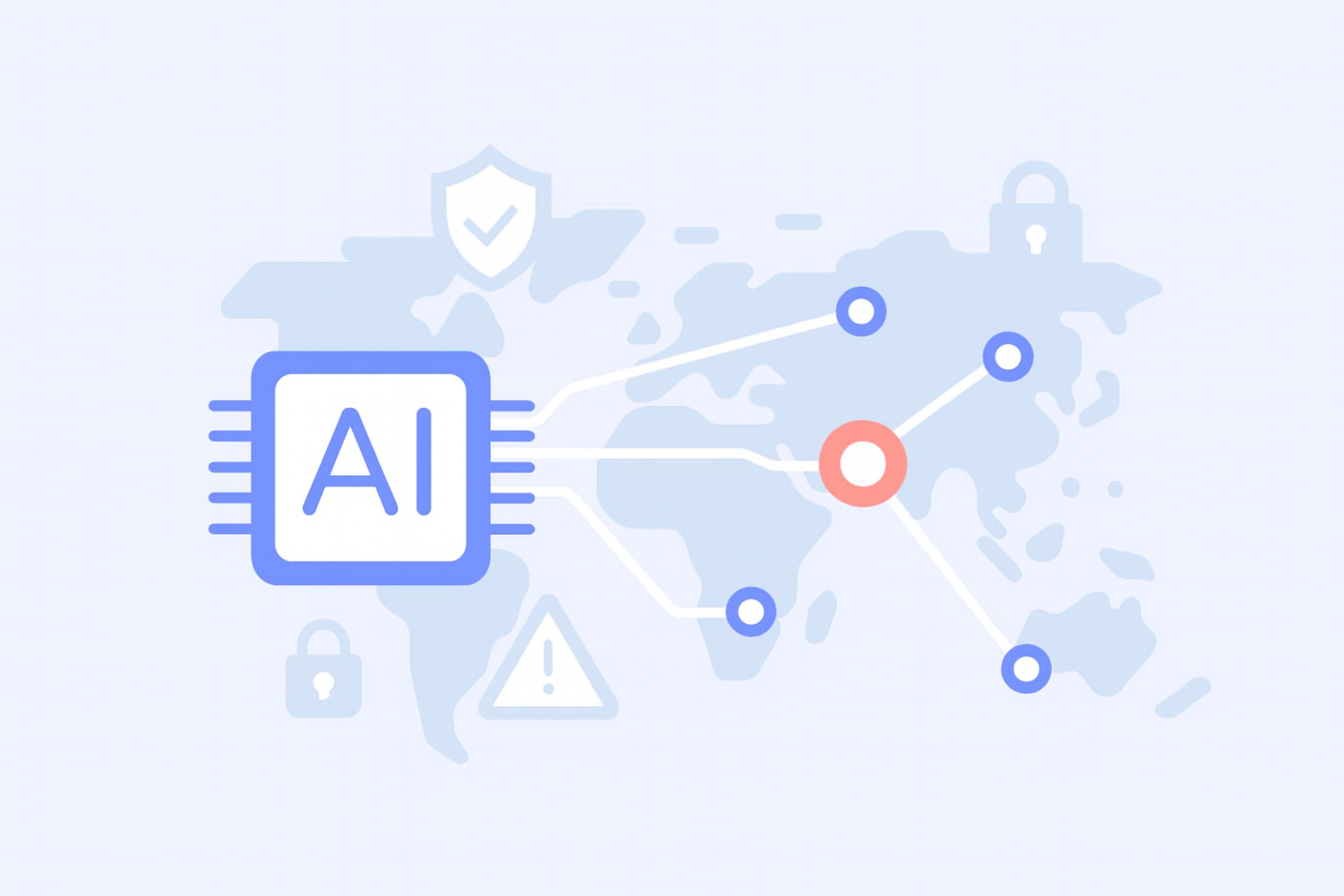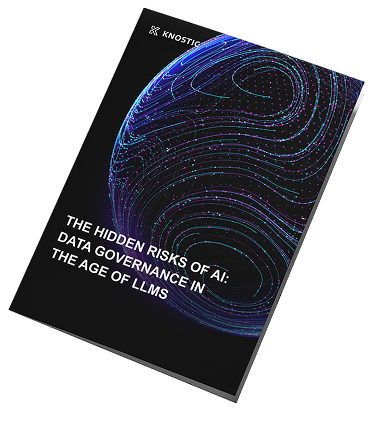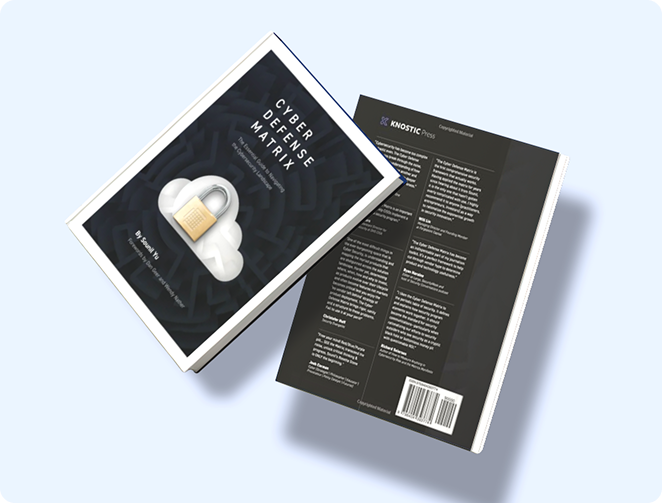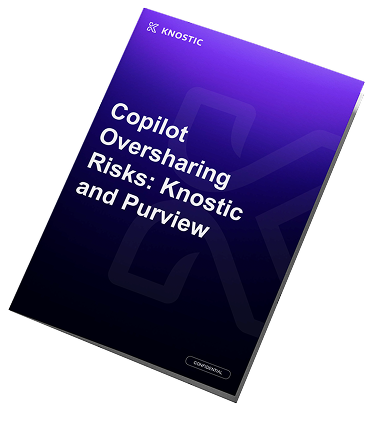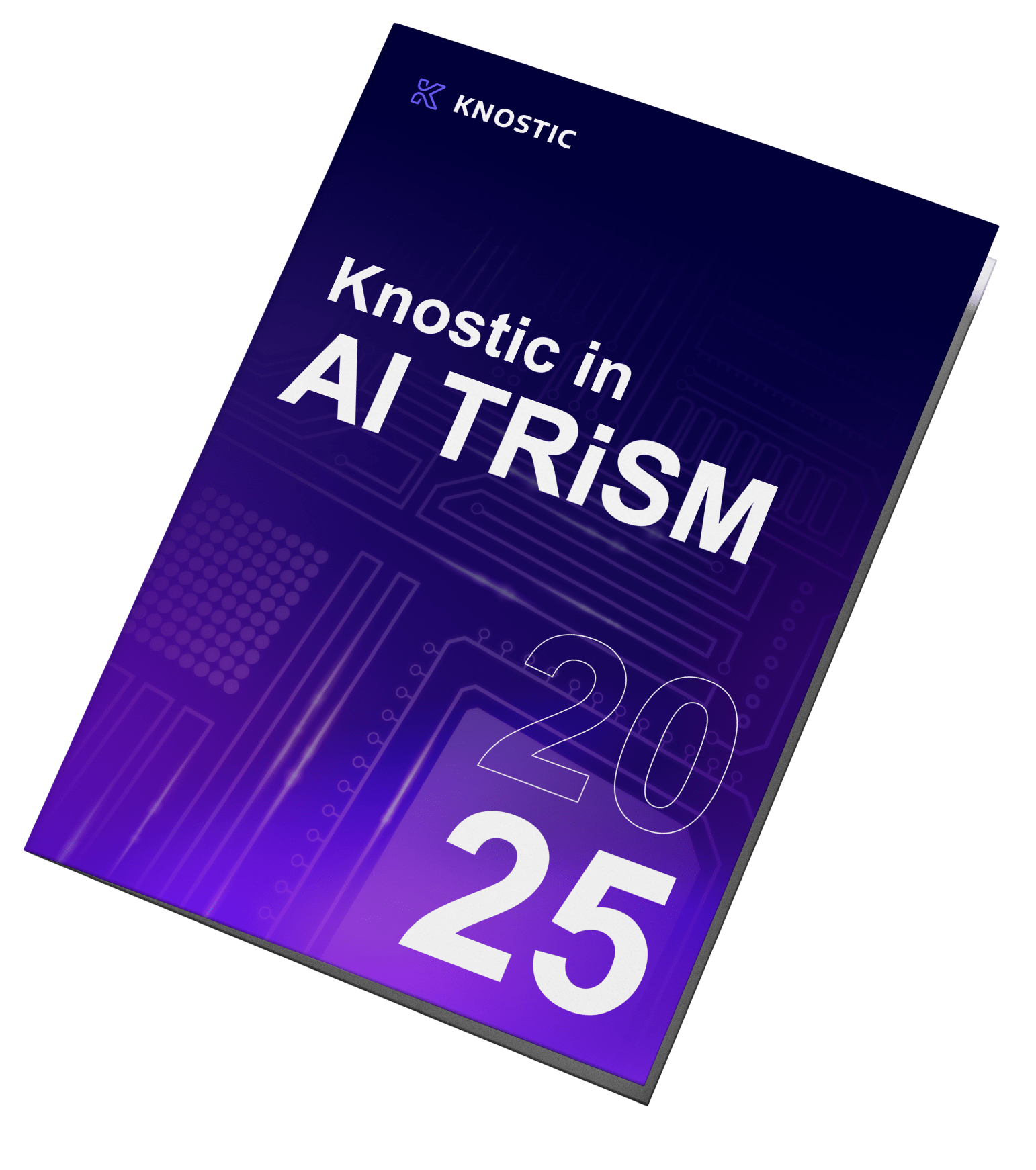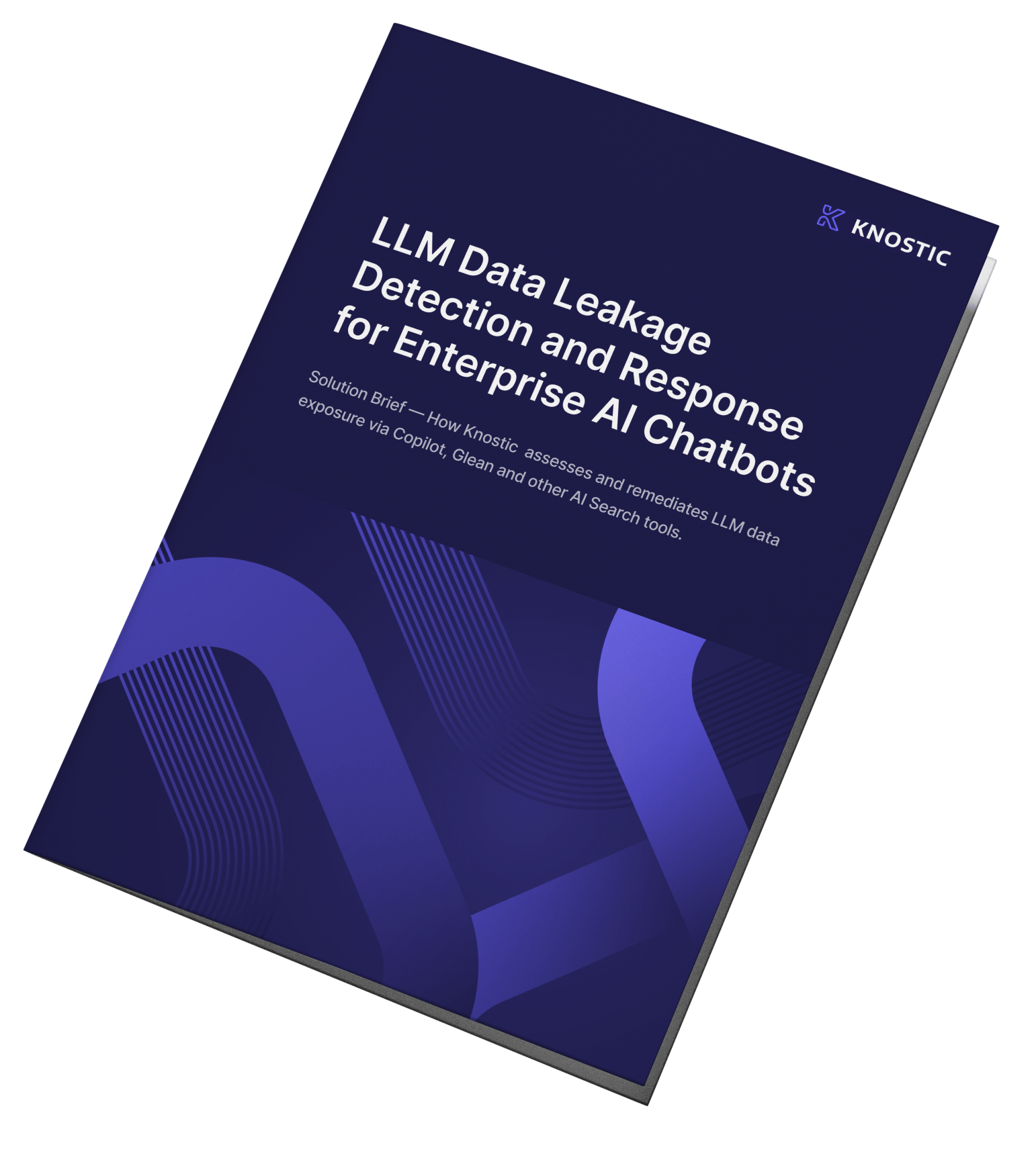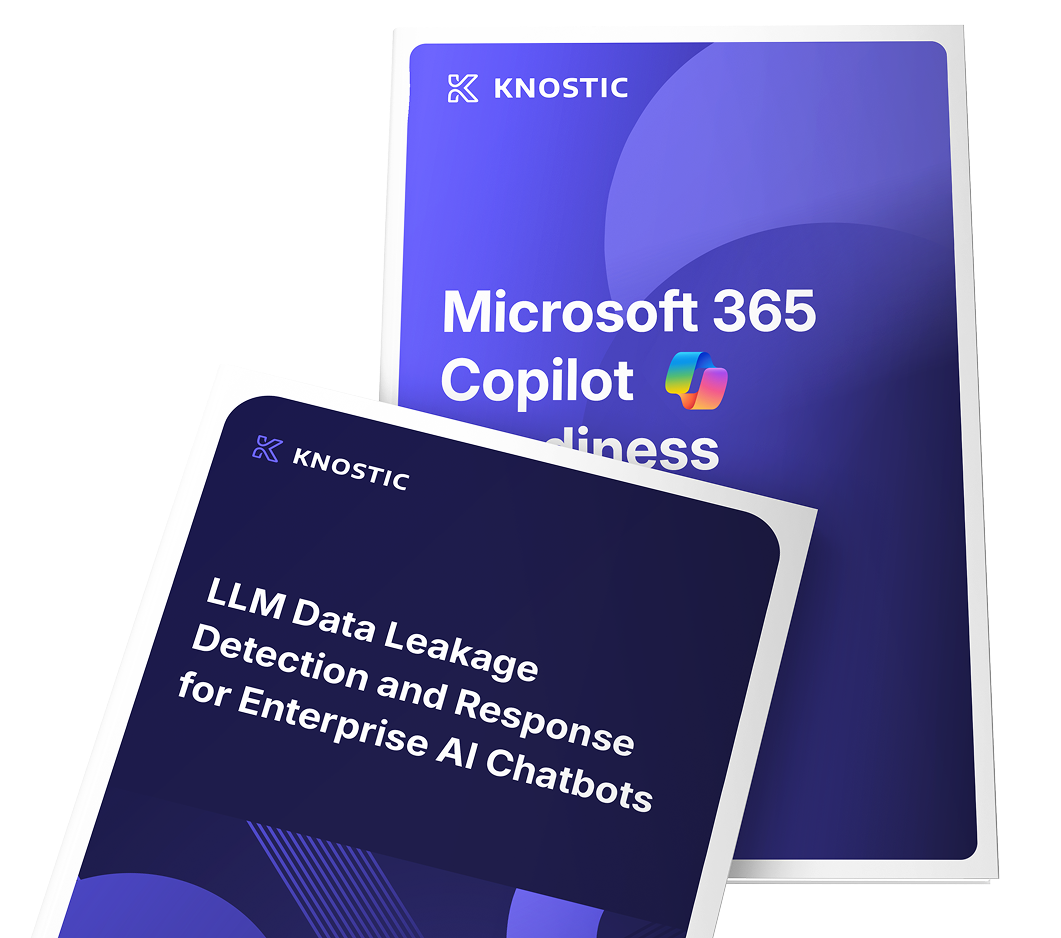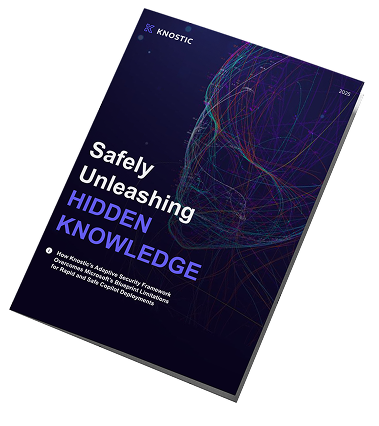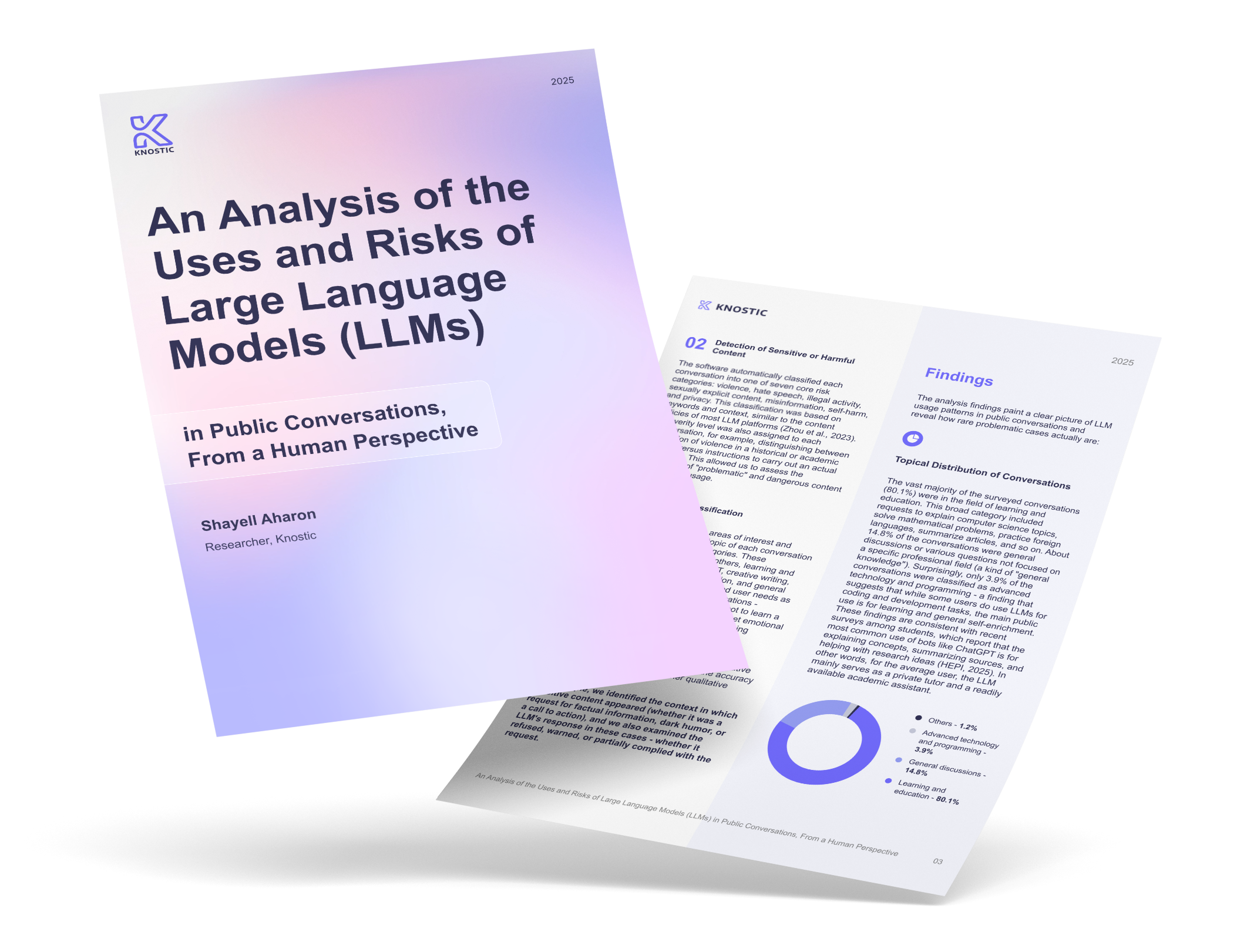Key Findings on AI data security
-
AI data security is the practice of safeguarding sensitive information and knowledge flows in enterprise AI systems, including prompts, context retrieval, model outputs, and usage, differentiating it from traditional IT security models.
-
Core security goals, such as confidentiality, integrity, availability, and auditability, are adapted to AI workflows to address unique risks like inference exposure and unauthorized data retrieval.
-
Common enterprise AI threats include prompt injection, hallucinations, vector poisoning, oversharing, and unauthorized tool usage, such as Shadow AI which requires new mitigation strategies beyond legacy DLP.
-
Effective strategies include zero-trust access, dynamic policy enforcement, continuous monitoring, and AI-specific observability that tracks how data is retrieved and transformed during generation.
What Is AI Data Security in Enterprises?
AI data security in enterprises must understand the unique risks posed by modern large language models before considering mitigations. These risks include leakage of sensitive prompts, exposure of confidential retrieved context, and unintended disclosure through model outputs. Inference exposure and retrieval exposure can bypass traditional perimeter and access controls, creating a new attack surface that traditional IT security measures do not fully cover.
Prompts are what users send into AI systems. A 2024 study shows that defense techniques can reduce prompt extraction by 83.8% for Llama2-7B and 71.0% for GPT-3.5, showing how critical it is to defend sensitive or proprietary prompts.. Retrieved context refers to the background data (like document snippets or conversation history) that an AI model uses to craft its response. A systematic investigation of multi-turn interactions showed prompt leakage rates rising from 17.7% to 86.2% under specific attack patterns, highlighting the risk of sensitive context being exposed without proper guards.
Model outputs, the responses generated by AI, can also leak information. Research into extraction attacks across various models, such as Alpaca, Vicuna, Llama-2, GPT-4.5, Microsoft Copilot, and DeepSeekconfirms that simple text-based attacks can reveal system prompts with high success rates..
Goals of AI Security
The following are four areas in which traditional security principles must be adapted to support AI’s novel data flows and access patterns: confidentiality, integrity, availability, and auditability.
Confidentiality means only authorized users can access sensitive AI data, and that even at inference time, unauthorized parties cannot derive protected information from model responses (inference exposure controls).
Integrity ensures that AI outputs and models are accurate and unaltered. It protects the system from unauthorized manipulation or corruption. Availability ensures AI systems operate reliably and are accessible when needed, maintaining resilience not only to denial-of-service but also to degraded model performance due to adversarial inputs or data drift.
Auditability means every AI interaction can be traced. In AI contexts, this extends beyond standard log entries to include prompt capture, retrieved context snapshots, applied policies, and model output versions, creating a complete decision provenance chain. It allows investigation of the user’s prompts, the generated outputs, and whether sensitive data was accessed. In enterprise AI, auditability supports compliance with regulatory standards such as GDPR, HIPAA, as well as other corporate governance mandates.
Where It Differs From Classic Security
Traditional security prevents unauthorized access to files, networks, and databases. AI systems add complexity, for example even without direct file access, AIs can inadvertently reveal sensitive knowledge through inference. Inference exposure means a user may gain unauthorized insights from AI outputs, even if they never accessed original documents. This mode of attack doesn’t exist in non-AI systems.
Retrieval exposure occurs when content pulled by the AI (like internal documents) is used to craft outputs beyond what the user is authorized to see. These exposures bypass classic perimeter and access controls, making them uniquely challenging. This is why it is important to implement semantic boundary enforcement by evaluating the meaning of retrieved or generated content before release, in order to prevent leakage even when formal access permissions are met.
Effective defenses must focus not just on preventing unauthorized access, but also on inference control, context isolation, and rigorous logging to ensure post-incident investigation capabilities.
Why is It Important to Secure Your Enterprise AI?
Securing enterprise AI is critical because generative tools can infer, synthesize, and expose sensitive information in ways traditional security models were never designed to control.
Business impact
AI systems constantly interact with sensitive or proprietary data. Without LLM data protection, prompts or outputs may leak intellectual property. Unauthorized exposure can damage competitive advantage and erode stakeholder trust. Deloitte reports that 73% of executives expect to increase investment in cybersecurity because of GenAI-related risks. Investing in GenAI security supports safe innovation and protects enterprise value.
AI-specific risk
Generative AI can infer sensitive information even from vague or partial inputs. Retrieval leakage risk arises when background data feeds the model’s responses, even when sources are restricted. Prompt injection or oversharing can cause unintentional disclosure of sensitive information through user queries. A cybersecurity 2024 overview highlights that GenAI systems create novel leakage paths hidden beneath the view of typical DLP controls. These risks demand targeted AI security strategies.
Regulatory pressure
Privacy laws like GDPR and CCPA require that data processing be lawful and minimal. AI systems must show they only process necessary data and they must record all processing steps. A 2025 academic framework examining PII leakage mitigation in LLMs achieved an F1 score of 0.95 for masking sensitive identifiers, demonstrating how enterprises can meet regulatory demands by deploying adequate technical controls. Audit trails of AI interactions support compliance verification and forensic investigation after incidents. Failing to document or limit AI data use increases legal exposure and regulatory risk.
Top Enterprise Risks to Monitor
AI capabilities introduce new and nuanced risks, such as oversharing, prompt manipulation, hallucination, data leakage, and unauthorized tool usage (Source: AI Data Security Risks and How to Minimize Them). These risks exceed the protective scope of traditional access controls and demand focused safeguarding strategies.
Oversharing in LLM search
AI oversharing happens when users unintentionally expose sensitive data in prompts, or when LLMs retrieve and combine data that violates an organization’s “need-to-know” policy. Deep integrations with Teams, Outlook, OneDrive, and SharePoint increase the risk because Copilot may pull from broadly shared files, even if they’re labeled restricted. Mitigation includes enforcing need-to-know scopes with RBAC/ABAC, sensitivity labels combined with real-time output filters, and middleware guardrails before AI responses are shown. Read more here.
Prompt injection and jailbreaks
Prompt injection tricks models into bypassing guardrails and retrieving or generating unsafe outputs. This can involve hidden instructions in inputs, maliciously crafted queries, or multi-step prompt chaining. Mitigation involves prompt simulation testing, role-based restrictions, and continuous red-teaming.
Hallucinations with confidence
Hallucinations are false outputs that sound correct but lack a factual basis. GPT-4 has approximately a 3% hallucination rate in RAG tasks, but domain-specific legal LLMs hallucinate 17–34% of the time. Deloitte found 38% of executives admitted to making incorrect decisions based on hallucinated AI outputs. Mitigation strategies include groundedness scoring, prompt-response evaluation loops, human-in-the-loop sampling, and monitoring telemetry for answer drift.
Data leakage
AI data leakage occurs when GenAI infers and exposes sensitive data without direct file access. 48% of employees admit to uploading sensitive corporate data into public AI tools. Vector-store poisoning can bias retrieval results with a single malicious document. Integration drift from outdated plugins or APIs can create unseen access misalignments. Mitigation steps follow NIST AI RMF principles: identify, protect, detect, respond, and recover.
Vector and index poisoning
Embedding a single manipulated file into a vector database can distort LLM answers over time. This can lead to misinformation, compliance failures, or reputational damage.
Adversarial AI attacks
Adversarial attacks include evasion, poisoning, and inference, each targeting different layers in AI systems. Inference attacks can reveal sensitive project or IP details even without file access. Mitigation includes adversarial training, continuous drift monitoring, and zero-trust access.
AI explainability
Explainability ensures AI answers can be traced to approved sources. Opaque vector embeddings, multi-stage RAG pipelines, and missing audit trails make outputs hard to verify. Mitigation includes logging retrieval provenance, prompt-response chains, feature attribution, and periodic human audits.
Shadow AI
Shadow AI is the use of unauthorized AI tools in the workplace. 75% of knowledge workers use GenAI at work, and 78% bring their own AI tools. Unapproved tools can cause data leaks and compliance breaches, as in the Samsung incident, where chip design code was pasted into ChatGPT. Mitigation includes governance policies, usage monitoring, and employee training.
Large Enterprise LLM Data Security
Large enterprises face elevated GenAI data security risks due to scale, system complexity, and integration depth, requiring precise controls to prevent leakage, inference exposure, and compliance failures.
Microsoft Copilot Security
Copilot can retrieve data from across M365, potentially revealing content beyond a user’s need-to-know scope. Mitigation includes dynamic knowledge boundaries, real-time policy enforcement, and integrated sensitivity labels. Read more here.
Glean Data Security
Glean’s vector search can overshare by combining permissible but contextually inappropriate content. Knostic adds monitoring and policy enforcement to limit oversharing at the knowledge layer. Read more here.
Gemini Data Security
Gemini, like other LLMs, can be exploited with prompt injection, inference attacks, and vector poisoning. Mitigation involves applying the same knowledge-boundary, logging, and policy-enforcement strategies used for Copilot and Glean.
AI Data Security Strategy
The AI data security strategy should balance immediate actions with long-term investments. Enterprises must implement baseline controls, enhance detection capabilities, and embed governance into AI workflows.
Access controls and permissions for AI tools
Start with zero trust. Treat every prompt, retrieval, and API call as untrusted until policy checks pass. Enforce least-privilege at the knowledge layer, not just at the file or app layer. Use ABAC and RBAC together so access is checked against the user's identity and the task they are performing.
Apply continuous authorization during a session, not one-time checks. NIST’s Zero Trust Architecture sets these principles and shows how to implement granular, context-aware controls. Map enterprise controls to NIST SP 800-53 families like AC (access control) and AU (audit).
Align AI guardrails with the AI RMF's “Govern, Map, Measure, Manage” functions to keep controls risk-based. Enforce strong logging for every access decision to support investigations and compliance. Document how authorizations are evaluated at inference time and during retrieval. This closes gaps between classic permissions and AI knowledge exposure.
Data classification and AI policy enforcement
Classify data before generating it. Use an ISMS baseline so labels are consistent across tools. ISO/IEC 27001 and the 27000 family provide the structure for policies, roles, and continual improvement. NIST SP 800-60 gives a method to map information types to confidentiality, integrity, and availability levels. Use those impact levels to drive policies for AI answers and prompt scopes.
Convert policy into code so retrieval and generation can be blocked, redacted, or justified by label and context. Keep labels dynamic where possible since sensitivity can change with use. Record label provenance and any downgrades or overrides. Test enforcement with contrived prompts and track false allow/deny rates. Tie enforcement evidence to your audit program.
AI monitoring practices
Monitor prompts, retrieved context, tool calls, outputs, and user actions. Capture who asked, what was retrieved, why it was allowed, and what the model returned. Build detections for oversharing, unusual retrieval paths, and prompt-injection patterns. Maintaining comprehensive and searchable logs helps with incident response. NIST’s log management guidance details aggregation, correlation, retention, and cold storage practices. Feed detections into SIEM and case management tools with playbooks. Rehearse evidence collection so you can reconstruct any answer. Monitor model and retrieval drift that can create new exposures over time.
AI observability
Observability explains behavior, not just whether the AI worked. Collect metrics, logs, and traces from the full RAG pipeline. Trace each answer to the exact documents, chunks, and versions that influenced it. Track retrieval scores, grounding coverage, and output confidence to identify and block risky answers. Keep lineage from prompt to output for audits and root-cause analysis. Use production readiness rubrics for ML systems to define tests and KPIs that matter.
Address known ML “technical debt” risks like hidden feedback loops and configuration drift using telemetry. Make observability data available to security, risk, and audit teams, not only ML engineers. Store artifacts so teams can reproduce incidents. Use the data to tune guardrails and policies, then measure regression. Then, close the loop by demanding explainable retrieval and synthesis paths.
AI Usage Control (AI-UC)
Classic access control stops at “Can I open this file?” Usage control continues into “how may I use or disclose the knowledge.” Apply UCON concepts at answer time: Authorizations, Obligations, and Conditions. Check obligations like just-in-time approvals or training acknowledgements before release. Evaluate conditions such as location, device health, and time of request. Make decisions continuously so answers can be cut off if context changes mid-session. Adjust attributes when usage occurs to reflect that sensitive knowledge was accessed. Enforce policies that limit copying, summarizing, or exporting, and transformations such as masking and selective redaction in the response stream. Log every usage decision for audits. This elevates governance from files to knowledge.
AI security posture management (AI-SPM)
Treat AI posture like cloud posture. Compile full inventories of models, prompts, tools, connectors, datasets, indexes, caches, and logs. Map each asset to owners, environments, and policies. Continuously check for misconfigurations such as open indexes, stale embeddings, weak allow-lists, or missing logging. Align checks to AI RMF “Measure” and “Manage”functions Record exceptions using time limits and reviewers. Demonstrate post-market monitoring is active where required by law. Generate board-level posture summaries that include risk-rated backlogs and trend lines. Automate ticketing for violations and verify closure. Continuously validate posture by red-teaming and by replaying risky prompts against staging. Document your control library and link it to standards.
Data security posture management (DSPM)
Know where sensitive data lives before you let AI touch it. Build a current map of repositories, data types, owners, and flows. Use the NIST mapping method to set impact levels that inform protection measures. Link repositories to labeling, encryption, retention, and egress policies. Verify that embeddings, caches, and logs inherit the proper protections. Scan for drift between container permissions and document sensitivity. Require evidence that delete and retention rules get applied to derived artifacts. Block retrieval from stores that fail posture checks, and feed posture signals into AI policy so risky sources are excluded at query time. Reduce the attack surface by shrinking what AI can see to the minimum necessary.
Security Metrics and ROI
Adequate GenAI security demands rigorous risk tracking, swift operational response, and precise value delivery to stakeholders.
Risk
Track oversharing incidents, PII exposures, and policy violations as first-class metrics. Define an incident as any answer that exceeds need-to-know, lacks provenance, or breaks label rules. Count attempts blocked by guardrails as well as those caught after delivery. Separate human-reported issues from automated detections. Measure dwell time for exposed answers until containment. Record recurrence by user, team, data type, and source system. Tie each event to control failures so you can fix root causes. Use the AI RMF outcomes to frame risk trend lines. Report quarterly with targets and error bars. Keep evidence linked to logs and traces for every datapoint.
Operations
Measure the mean time to detect and the mean time to respond or recover for AI data incidents. Use NIST’s definitions so teams can compare apples to apples. Report the median and 90th percentile to avoid outliers hiding in averages. Track time to quarantine risky answers and time to tune a failed policy. Add regression pass rate for guardrails and eval suites. Include coverage from prompt-injection tests and oversharing simulations. Show backlog burn-down for posture violations. Connect metrics to incident response guidance to make improvements actionable. Publish SLOs for critical use cases and alert when breached. Keep runbooks versioned and linked to the metric period.
Value
Prove that security enables safe adoption, not just increases cost. Track AI adoption rate in eligible teams after controls are in place. Measure task cycle-time deltas with and without governed AI. Count audits passed without AI findings and the number of issues downgraded due to substantial evidence. Show a reduction in manual review hours because explainability and logs answered auditor questions. Quantify fewer deployment holds from legal and risk. Attribute savings from avoided rework when guardrails blocked bad answers. Tie savings to business KPIs such as sales cycle time or case resolution time. Map benefits to ISO/IEC 42001 and AI RMF requirements to show strategic alignment. Present a quarterly “controls dividend” that summarizes hours saved and risks reduced.
5 Best AI Data Security Platforms
Securing enterprise AI requires a layered stack. Enterprises evaluate AI security platforms to unify runtime controls, monitoring, and auditability across assistants, retrieval pipelines, and data sources. The following platforms help govern knowledge flow, enforce access, monitor LLM behavior, and maintain regulatory alignment across AI systems.
Knostic
Knostic governs the knowledge layer between static data and AI answers. It detects where Copilot, Glean, Gemini, or custom LLMs overshare sensitive knowledge from across Teams, OneDrive, SharePoint, and other sources. It simulates real employee prompts to reveal exposure paths before users do, building dynamic, need-to-know boundaries that reflect role, context, and actual usage, not only static labels.
Knostic plugs into data sources likeM365, helping optimize sensitivity labels and policies. It provides continuous monitoring to catch AI-specific exposure that file-centric tools miss, and produces an audit trail of who accessed what knowledge and how, even when the LLM inferred it from multiple documents. It offers remediation playbooks so security teams can act by project, department, or data type. It reduces compliance risk and accelerates safe AI adoption without redesigning the data architecture.
Data Security Posture Management (DSPM) platform
Deploy a DSPM platform that maps where sensitive data lives across cloud repositories and SaaS, classifies it, and ties that map to AI usage. It should surface the drift between repository permissions and document sensitivity and, enforce policy inheritance for embeddings, caches, and logs. DSPM feeds risk signals to AI guardrails so high-risk sources are excluded at query time. It should help you retire, quarantine, or minimize data that drives exposure. Ideally, it should also integrate with your existing governance and audit stack for evidence.
AI Security Posture Management (AI-SPM) platform
Select an AI-SPM platform that inventories models, indexes, connectors, prompts, and logging paths. It should continuously check for misconfigurations such as open indexes, stale embeddings, and missing audit trails, and align to NIST AI RMF so findings are risk-based. It should also link violations to owners and auto-create tickets for closure. It’s important that it provides red-team replay and prompt-safety testing at scale. Finally, it should generate executive posture summaries and trends.
Zero-Trust Access and Usage Control platform
Select a platform that enforces least-privilege not just at file open but at answer time. It should combine RBAC and ABAC with just-in-time context checks,evaluating obligations and conditions such as purpose, device health, and location. It should redact or block responses when policy is breached and log every decision. It should also support hold-backs when confidence or provenance is weak, and integrate with identity, DLP, and incident response.
LLM Observability, Testing, and Red-Team platform
Adopt a platform that traces every answer to source chunks, policies, and versions. It should score groundedness and coverage, and flag risky outputs in real time. It should run adversarial prompt suites and retrieval stress tests before rollout. It should also watch for semantic drift, low-confidence spikes, and provenance gaps, and have the ability to export evidence to your governance tools for audits and post-incident analysis. Critically, it should maintain reproducible artifacts for root-cause analysis.
What’s Next
Knostic’s solution brief page outlines how enterprises can assess and remediate LLM data exposure in tools like Copilot, Glean, and other AI search tools. Take a look to see how the approach could fit your organization.
FAQ
- What is AI data security, and how is it different from traditional data security?
AI data security is concerned not just with files and networks but also the dynamic knowledge layer created by generative AI. It protects what users ask, what the AI retrieves, and what it outputs, not merely the underlying documents. Unlike traditional security, it controls inferences, real-time access, and semantic risk across prompts, retrieval, and generation.
- Where do data leaks happen in GenAI systems?
Leaks can happen through oversharing in prompts, inference from aggregated retrievals, vector-store poisoning, hallucinations, or misconfigured integrations with tools like Copilot or Glean. Users may inadvertently surface confidential content through innocent queries.
- What should we monitor to prove our AI data security is working?
Track active prevention efforts using real-time simulations and usage monitoring. Track risky prompt patterns, policy enforcement logs, and retrieval behavior to detect oversharing paths. Log all inference activity, detect anomalies with groundedness scoring, and verify that access boundaries are held during testing and live sessions.
- How does Knostic strengthen AI data security?
Knostic enforces real-time knowledge controls, shaping what AI models can see and answer based on users roles and context, not just labels. It prevents oversharing by blocking or redacting high-risk responses before a user sees them. Its prompt simulations expose oversharing vulnerabilities ahead of time. It increases explainability by tracing responses back to specific documents and policies, delivering SIEM-ready audit logs. Knostic also integrates with M365, Purview, Glean, Copilot, AWS, ServiceNow, and custom LLMs, supporting both cloud and on-prem workflows.




